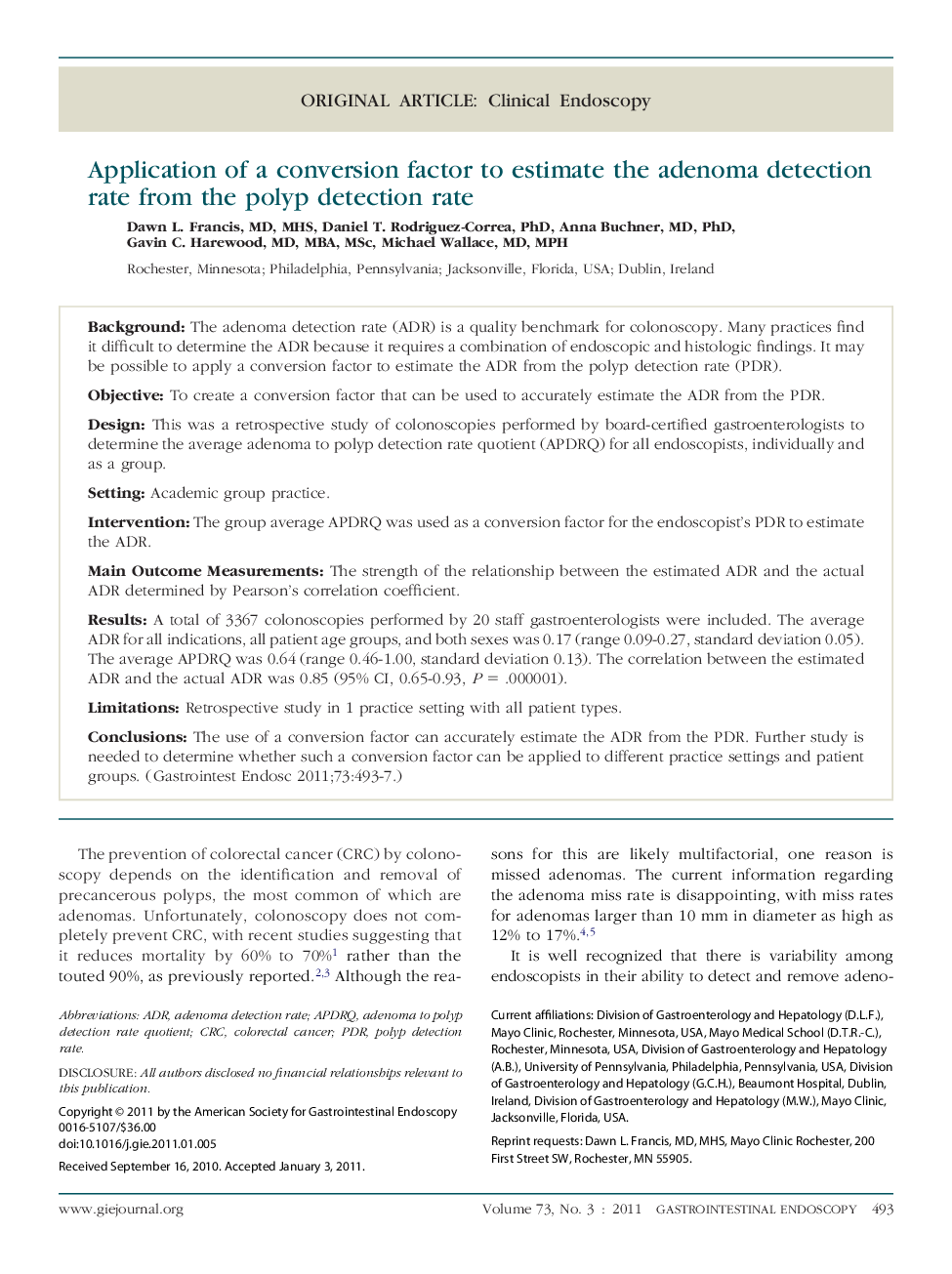| Article ID | Journal | Published Year | Pages | File Type |
|---|---|---|---|---|
| 3306321 | Gastrointestinal Endoscopy | 2011 | 5 Pages |
BackgroundThe adenoma detection rate (ADR) is a quality benchmark for colonoscopy. Many practices find it difficult to determine the ADR because it requires a combination of endoscopic and histologic findings. It may be possible to apply a conversion factor to estimate the ADR from the polyp detection rate (PDR).ObjectiveTo create a conversion factor that can be used to accurately estimate the ADR from the PDR.DesignThis was a retrospective study of colonoscopies performed by board-certified gastroenterologists to determine the average adenoma to polyp detection rate quotient (APDRQ) for all endoscopists, individually and as a group.SettingAcademic group practice.InterventionThe group average APDRQ was used as a conversion factor for the endoscopist's PDR to estimate the ADR.Main Outcome MeasurementsThe strength of the relationship between the estimated ADR and the actual ADR determined by Pearson's correlation coefficient.ResultsA total of 3367 colonoscopies performed by 20 staff gastroenterologists were included. The average ADR for all indications, all patient age groups, and both sexes was 0.17 (range 0.09-0.27, standard deviation 0.05). The average APDRQ was 0.64 (range 0.46-1.00, standard deviation 0.13). The correlation between the estimated ADR and the actual ADR was 0.85 (95% CI, 0.65-0.93, P = .000001).LimitationsRetrospective study in 1 practice setting with all patient types.ConclusionsThe use of a conversion factor can accurately estimate the ADR from the PDR. Further study is needed to determine whether such a conversion factor can be applied to different practice settings and patient groups.
